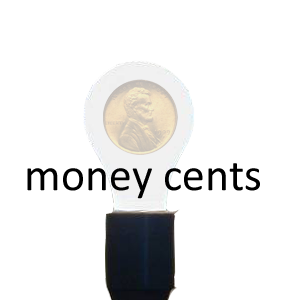By now you’ve learned about the power of compounding and have been informed about the best investment option for the long term—stocks. You know that $100 earning average stock market returns of 11% annually will end up $18,456.48 in 50 years. You also know that since 1927 stocks have outperformed bonds in every single 30-year rolling period by an average margin of 4.8:1. If you’re still reading our blog, it’s safe to assume you’re interested in investing in stocks, correct? Probably the first thought that has popped into your head regarding stock investing is the simple to ask, hard to answer question: How do I choose a good stock?
Fear not, young grasshopper; we’re here to help you! A great first step is to think of all the products you enjoy and use on a daily basis. Maybe you wake up, check the time on your iphone (Apple), roll out of bed, and saunter towards your kitchen table where you eat a bowl of Frosted Mini Wheats (Kellogg). After eating and brushing your teeth with your Oral B toothbrush (Procter & Gamble) you may want to spend your precious time checking your G-mail (Google) on your new computer (Hewlett Packard) that runs on a Windows OS (Microsoft) before you rush to work in your Taurus (Ford). If you just take a few minutes to look around in your life, you can create a list of many companies to act as a starting point when choosing great stocks to invest in.
Now that you have a list of companies to choose from, it’s time to sort out what actually seems interesting. Don’t get us wrong, though. Many of the dullest corporations can end up phenomenal investments; however, when investing in stocks as a novice (or anyone, as a matter-of-fact), look for something that you will enjoy studying. If you love video games, for example, perhaps you would be interested in researching Activision Blizzard, the company behind Call of Duty, Guitar Hero, and World of Warcraft just to name a few franchises. Researching a business can be a long and arduous task to some once you know what you are looking for, and the best way to be relieved of boredom is to research what you like and can relate to. Knowing about the products or services from first hand experience already gives you a head start in your research.
Of course, narrowing down to a list of businesses you will enjoy studying is a great starting place, but be advised that, by all means, it is not the finish line. Several other factors should be looked at when researching stocks—and we’ll talk about these in later posts. Another thing to keep in mind is that not all businesses are easy for everyone to understand and analyze. If you feel that a sector such as biopharmaceuticals is too difficult to understand, then chances are the wise move is to move on to other businesses you can better comprehend. Even Warren Buffet—potentially the greatest investor of all time—has a file for “hard-to-research” stocks that even he views as too complicated to fully understand. If he thinks certain businesses are too difficult to analyze, then we should feel the same way as well.
As you continue to live out your daily life, think about what businesses provide products and services that stand out to you in society, narrow those down to a list of businesses that you would enjoy learning more about, and stay tuned to MoneyCents where we will continue to teach you more about making sense of your cents.
